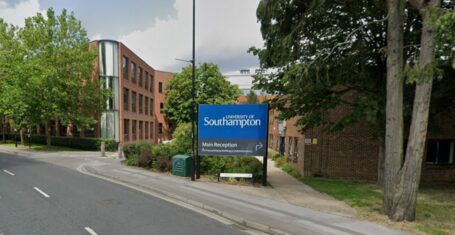
'Lest We Forget'
On the 11th November 1918 at 1100 hours, an armistice was signed between the Allies and the Central Powers, bringing the end to the ‘Great War’ – one of the […]
On the 11th November 1918 at 1100 hours, an armistice was signed between the Allies and the Central Powers, bringing the end to the ‘Great War’ – one of the biggest losses of human life due to a single war the world had ever seen. Over 37 million military men and women lost their lives across both sides, with nearly 9 million civilian casualties.
On the first day of the Somme alone, the battle claimed up to 75,000 casualties. That battle was one of the deadliest in human history, with an estimated 1,000,000 deaths and 200,000 horses killed within an area no bigger than Southampton. A Canadian Regiment called the Royal Newfoundland Regiment lost 70% of its men in fewer than 30 minutes of the start of the battle which lasted four and half months.
Remembrance ceremonies start the two minutes silence with the ‘Last Post’, which was traditionally a marker for the end of the day and a final farewell to those who had lost their lives that day. The silence is ended by the ‘Rouse’, which traditionally signifies the start of a new day, the implication being that we can one day wake up to a world without such loss of life as the previous.
The two minutes silence is a crucial part of the Remembrance Ceremony as it gives us a chance to reflect on what sacrifices were made and how fortunate we are. As Winston Churchill remarked during World War 2, “Never has so much been owed by so many, to so few”.
Often a poem by Lawrence Binyon is read out, called ‘For the Fallen’, which makes up the ‘Ode of Remembrance’. The most famous stanza being:
They shall grow not old, as we that are left grow old:
Age shall not weary them, nor the years condemn.
At the going down of the sun and in the morning
We will remember them.”
Most Nations have a two minutes silence on the day of the 11th, however in an effort to prevent a drop in production towards the War effort in the Second World War, the United Kingdom moved it to the nearest Sunday.
The Rita Poppy is commonly used to signify support of remembrance, worn either on the lapel, front of a car, in military headdress, or on the right breast of military uniform. The Poppy is used due to its iconic symbolism of the blood spilled during war. It was also naturally growing in many of the battlefields of World War 1. Over 30 million paper poppies are made in the UK each year by a small team of 50 Royal British Legion volunteers, working out of a small office in Richmond, and are sold for an unspecified donation.
However, some public figures such as Jon Snow have claimed that there is a ‘poppy facism’ where if you do not wear a poppy you are frowned upon, claiming there is a political correctness about wearing the poppy. Others have claimed that supporting the Poppy Appeal glorifies war and the brutality of war, including loss of life and limb. However, supporting the RSPCA doesn’t glorify animal cruelty. Whilst others have criticised how the poppy has become a fashion item, with private companies banking in on the charitable trend, making expensive fashion accessories out of the poppy. This has arguably undermined the point of the humble paper poppy, symbolising the humbling lives and deaths of the soldiers.
I believe that solidarity with our armed forces on such a key historical military remembrance is important, not only to remember those who died, but to remind us that war is complex, and we need to learn and reflect on our history in order to understand the future of war.
Pay your respects, wear a poppy.







































